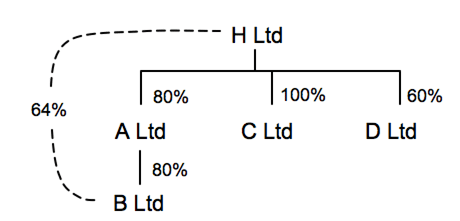Part 3 of 4
This is the Finance Act 2021 version of this article. It is relevant for candidates sitting the ATX-UK exam in the period 1 June 2022 to 31 March 2023. Candidates sitting ATX-UK after 31 March 2023 should refer to the Finance Act 2022 version of this article (to be published on the ACCA website in 2023).
So far we have reviewed the definitions of a group relief group and a capital gains group and considered some aspects of group planning.
The remaining parts of this article continue to examine the tax planning issues relating to group relief groups. This part looks at 51% group companies and consortia. Throughout this review of tax planning issues, the term ‘losses’ will be used to represent any/all tax attributes that can be surrendered via group relief.
51% group companies
When determining the quarterly payments threshold of a particular company, watch out for the length of the accounting period and make sure you are confident of the definition of a 51% group company. All companies in the group relief group will be 51% group companies but so will companies where the effective ownership is less than 75% and companies which are resident overseas. For example, in the H Ltd group from Part 1 of this article (as set out below), all five companies are 51% group companies.
Figure 1: The structure of the H Ltd group of companies

In addition, remember that companies need only be 51% group companies on the last day of the preceding accounting period. Accordingly, when determining the number of 51% group companies in relation to a company that has just joined a group, it is necessary to include any companies which were 51% group companies on that day.
Consortia
As a general rule, before starting any calculations in the exam, make sure you have considered all of the possible options. When dealing with group loss planning this means thinking about the possible existence of a consortium. In the group above, D Ltd is not a member of the H Ltd group relief group but that does not necessarily mean that H Ltd cannot surrender losses to D Ltd: it depends on who owns the remainder of D Ltd’s share capital. If companies that each own at least 5%, together own at least 15% (such that they, together with H Ltd, own at least 75%), then D Ltd will be a consortium company. H Ltd would then be able to surrender losses to D Ltd up to a maximum of 60% of D Ltd’s profits.
Conclusion
In the exam make sure that you think carefully when identifying the number of 51% group companies and whether or not there is the possibility of a consortium.
Note: Corporation tax issues are considered in two further articles:
- Corporation tax for ATX-UK
- Corporation tax – Groups and chargeable gains for ATX-UK
Written by a member of the ATX-UK examining team
The comments in this article do not amount to advice on a particular matter and should not be taken as such. No reliance should be placed on the content of this article as the basis of any decision. The authors and ACCA expressly disclaim all liability to any person in respect of any indirect, incidental, consequential or other damages relating to the use of this article.


